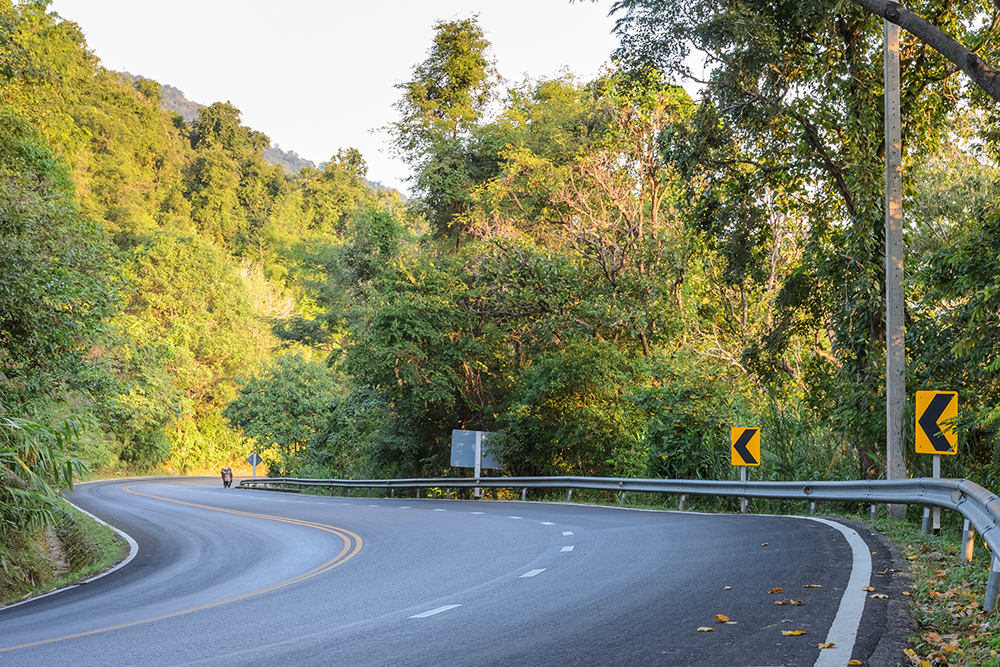10 Ways to Prevent Summer Brake Issues

Drivers long to rediscover the Great American Highway this summer. Make sure your vehicle’s brakes are ready for the adventure. Brake inspection put off for the past year can become problematic as Americans take to the highway for long overdue travel.
“We are seeing an increase in traffic during the past few months and expect even more during the next few months as COVID restrictions are removed,” said Officer Eulogio Seja of the California Highway Patrol. “Make sure you inspect your vehicle before going on any long trip.”
Office Seja considers brake maintenance one of the most critical items for your pre-travel checklist.
“The last thing you want to do is be stuck on the side of the road waiting two to three hours for some assistance,” Officer Seja said.
Brake problems account for 22 percent of all critical accidents according to one study done by the National Highway Traffic Safety Administration.
But there’s good news. Modern vehicles have numerous signals built into brake systems to let you know when there’s a problem. For Officer Seja, the key is heeding the warning signals.
His advice: Keep your ears, eyes and nose tuned to the signs of brake issues.
“If you hear squealing when applying the brakes, take your vehicle in for inspection,” Officer Seja said.
Smoke, noxious smells emitted when you use the brake system, brake light, squeaks, a brake pedal that drops to the floor--all are common issues with brake failure.
Summer heat places additional stress on your vehicle’s braking system, especially if you are driving windy roads. Soaring summer temperatures can cause brake pads to overheat and lead to brake system failure.
“If you see smoke or smell a bad odor, pull over to the shoulder of the road immediately,” Officer Seja said. “Remember, the safest place to be is in your vehicle with your seat belt buckled. Then call for help.”
Brake problems are exacerbated when pulling a trailer or hauling cargo.
“If you’re towing a trailer, you have all that extra weight,” Officer Seja said. “And going downhill places more stress on the brake system.”
The extra weight of a trailer lengthens stopping distance, requires more pressure exerted on the brake system and overheats the brake pads. Recent accidents serve to highlight the importance of regular brake check-ups.
In April, a fatal collision occurred in Washington state when the brakes system on a tractor-trailer rig failed and the vehicle crashed into a warehouse. Another recent accident in Washington was attributed to brake failure when a truck ran a red light and crashed into a sedan.
That same month in Idaho a truck swerved, rolled and caught on fire when its brakes failed. The driver was unhurt but shaken and Highway 95 was closed while emergency crews tended to the accident.
“We’ve seen brake-related fires from trucks hauling trailers on Highway 80,” said Officer Seja, referring to the busy freeway for hauling over the Sierra Nevada mountain pass.
Look for these common signs your brakes made need inspection before your summer road trip:
1. Vibration. Does the brake pedal vibrate when you apply the brakes? Don’t confuse this with the rapid pulsing caused by the antilock brake system, a system that automatically engages when drivers stomp and hold the brake pedal during emergencies.
2. Scraping or squealing sounds. Brake pads are designed to let you know when it's time to replace them. As the pads wear down, a metal strip within the pad appears and makes contact with the brake disc.
Squeals indicate your brake system needs immediate attention to prevent expensive repair or potential brake failure.
3. Brake light flashing on the driving console. The warning may indicate low brake fluid. It also could indicate the parking brake is engaged or a brake light bulb goes bad.
4. Trailer brake lights. Replace old or burned out bulbs and check if they’re working properly every time you attach the trailer. Sometimes, the problem could be the plug connectors.
“If you’re driving at night there is no way for people to see you are pulling a trailer if the lights aren’t working,” Seja said.
Every year traditional bulbs lose a significant percentage of their brightness and become dull. Replacement bulbs are an inexpensive investment to help prevent accidents.
5. Leaks. Never ignore drips or puddles--they may signal a serious safety hazard. Corrosion can cause leaks in brake lines, especially in humid areas such as along the Atlantic seaboard and in the Midwest.
6. Spongy brakes or a brake pedal that touches the floor. Do not drive your vehicle if you need to pump the brakes or the pedal goes to the floor when pressed. Have it towed to a service station.
7. Check your owner’s manual for brake pad replacement recommendations. Every vehicle is different. For example, stop-and-go city driving wears out brake pads faster than freeway driving.
Curvy mountain roads wear out brake pads faster than driving straight roads. Hauling loads also reduces brake pad lifespan.
8. Get a brake inspection after driving in extreme temperatures. It will root out problems with brake pads, leaks, and a worn or scratched brake disc.
Use replacement brake pads that meet or exceed manufacturer’s recommendations. Pad quality varies depending on their composite materials—metal fibers, rubber compounds, silicate and resins.
9. Resurfacing brake rotors or metal brake disk. This may be required if your vehicle has been driven more than 70,000 miles.
Extremely worn brakes can scratch or gouge the disc which reduces braking effectiveness. Most brake replacement involves smoothing out the rotor surface for improved braking.
10. Driver behavior. Brake pad replacement varies by where and how you drive. Stop-and-go city driving or towing a trailer reduces brake pad lifespan.
If you drive mostly on freeways, brake pads typically last longer. Do you habitually drive with a “heavy foot” on the brake pedal? That could shorten brake pad lifespan.